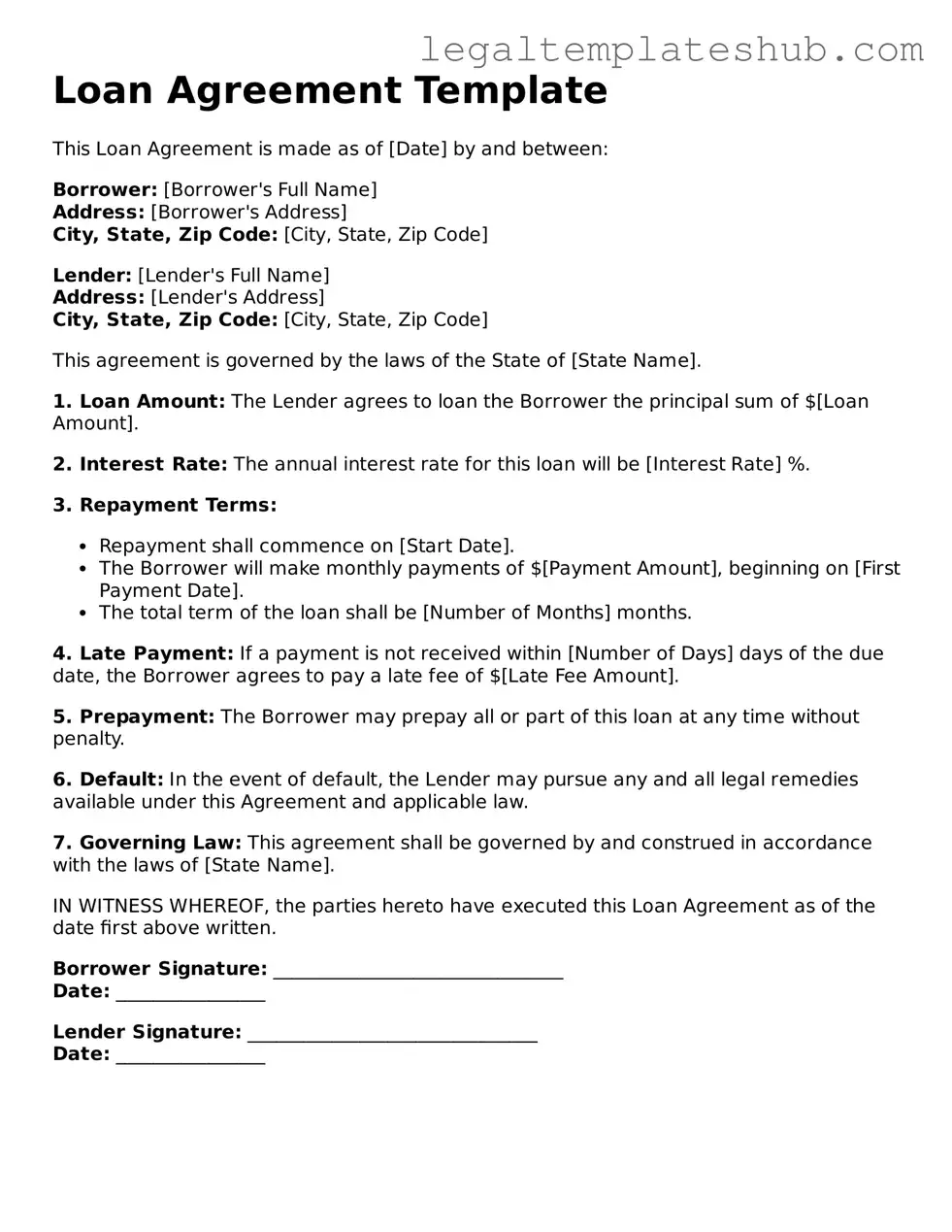Printable Loan Agreement Template
A Loan Agreement form is a legal document that outlines the terms and conditions of a loan between a borrower and a lender. This form specifies key details such as the loan amount, interest rate, repayment schedule, and any collateral involved. Understanding this form is essential for both parties to ensure clarity and protect their interests.
Ready to take the next step? Fill out the Loan Agreement form by clicking the button below.
Access Editor
